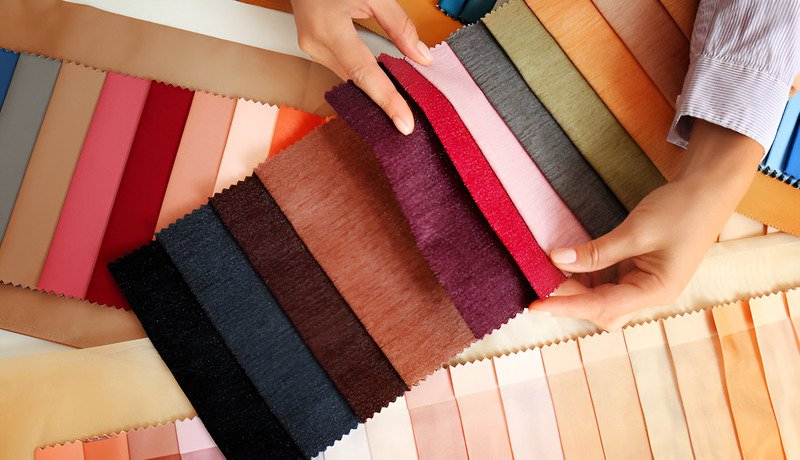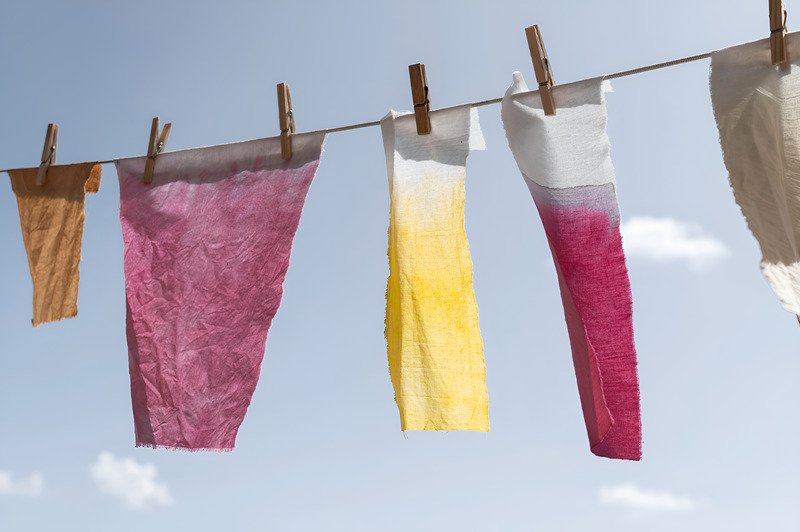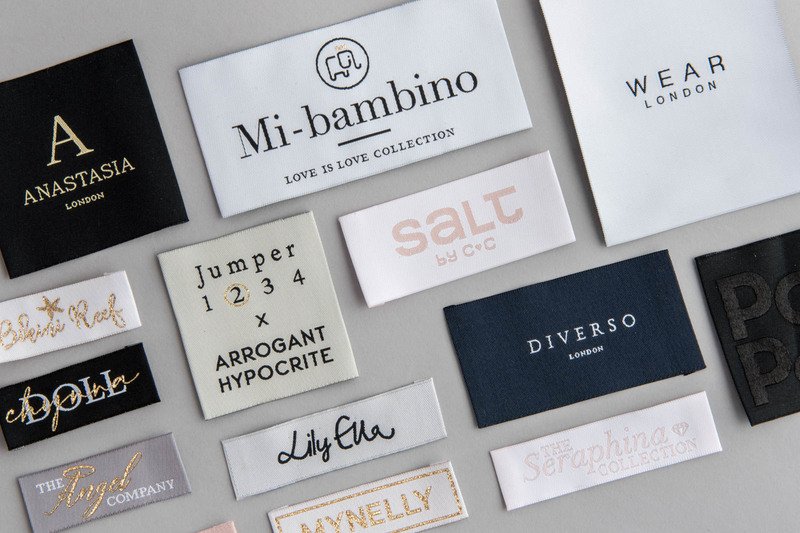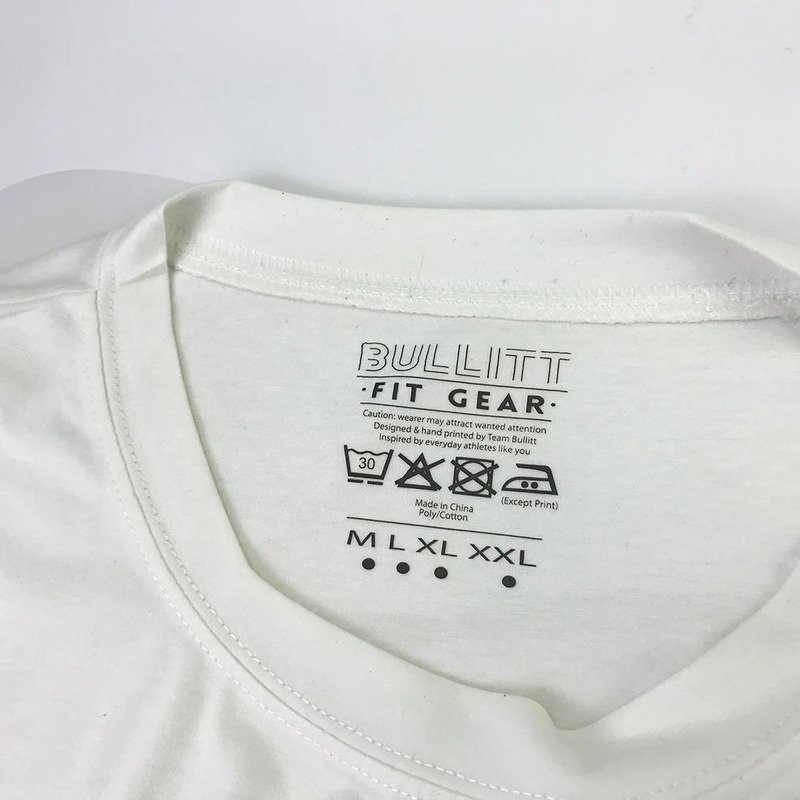What is Colorfastness? And Why It’s Vital for Your Brand Look
Vibrant, lasting colors on your custom items are crucial for preserving your brand image. This article delves into colorfastness, explaining what it means for your Packlove labels, stickers, or bags to retain their brilliance over time.
Discover why robust colorfastness is vital for ensuring your brand consistently looks its best and how this quality significantly impacts customer perception. You’ll gain a clear understanding of colorfastness and learn essential tips to ensure your custom printed materials maintain their striking appearance, effectively safeguarding your brand’s visual identity.
1. What is colorfastness?
1.1 Defining colorfastness
Colorfastness refers to a material’s ability to maintain its original color without fading, bleeding, or rubbing off when exposed to various conditions. Think of it as a color’s promise to stay true. Simply put, it’s how well the colors on your items (like labels or bags) resist unwanted changes.
At Packlove, when we talk about colorfastness, we’re focused on ensuring the beautiful colors you choose for your designs stay fresh and vibrant for as long as possible.

1.2 What it protects against
Fading means colors getting lighter, weaker, or dull, indicating poor resistance to color loss. It can happen over time, especially with light or washing. Imagine a bright red t-shirt. If it starts to look pinkish or less bright after a few washes, that’s fading. Fading means the colors on your item lose their original brightness and look washed out or pale.
Bleeding, also known as dye migration, is when colors spread from one part of the item to another, or onto other things it touches, showing poor resistance to color transfer. This often happens when the item gets wet, like in the laundry.
If you wash a new shirt with red and white stripes, and the red color runs into the white stripes making them pink, that’s color bleeding. Color bleeding is when dye moves from one area and stains another, like when the color from a dark label spreads onto a light-colored shirt.
Rubbing off (crocking): Color can also come off an item’s surface when it’s rubbed or touched. This is called rubbing off or crocking. It means the color isn’t properly stuck to the material and transfers to your skin or other surfaces when you touch or rub the item.
1.3 Think of it like this
A good quality printed t-shirt will keep its design looking sharp even after many washes – that’s good colorfastness. But a cheap sticker might fade quickly in the sun, or the ink might smudge if you rub it – that’s poor colorfastness. At Packlove, we understand that faded or smudged colors on your branding items are disappointing. That’s why we believe understanding colorfastness is the first step to getting products you’ll love.
2. Why is good colorfastness so important for your branded items?
2.1 Keeps your brand looking professional and high quality
Colors that stay true make your brand look good and trustworthy. If logos or designs fade, bleed, or rub off, your product can seem cheap or poorly made. This hurts your brand’s image. Good colorfastness makes your brand look cared-for and professional. If colors fade or bleed, customers might perceive your products as low quality, even if the main product is excellent.
This commitment to quality directly impacts your brand image preservation and product quality standards. At Packlove, we’ve seen firsthand how much difference vibrant, lasting colors make. Brands that ensure their labels and packaging maintain their color quality often get better customer feedback because it shows attention to detail.

2.2 Examples with Packlove products
Woven labels & heat transfer labels
These labels are on clothes and items that get washed and worn a lot. Woven labels (a label made by weaving threads together, like on clothing necklines) and heat transfer labels (a label applied to fabric using heat and pressure, often tagless) need excellent colorfastness to washing and rubbing.
Your logo on a woven label or heat transfer label needs to stay sharp and clear, even after many washes. You don’t want it to fade away or the colors to spread onto the shirt or garment. This keeps the clothing looking good and your brand easily seen. The importance of colorfastness in custom woven labels cannot be overstated, especially concerning garment care label requirements and the effects of laundering on printed branding.
For woven labels, Packlove often uses polyester threads because polyester is great at holding color. For heat transfer labels, the quality of the ink and how it’s applied is key to making the color last. Woven labels often have amazing colorfastness because the threads themselves are colored. Heat transfers need good quality inks that bond strongly to the fabric.
Customers creating long-lasting apparel often choose our woven labels because they know the colors will endure. For sportswear that’s washed often, we recommend specific heat transfer labels designed for durability. Packlove aims for high colorfastness rating for clothing labels. Think of it like getting an A or A+ for how well the color stays!
Zipper bags & poly mailers
The print on your packaging like zipper bags (resealable bags with a plastic zipper closure) or poly mailers (lightweight, durable plastic envelopes for shipping) is often your customer’s first look at your brand. The colors should not rub off on their hands or look faded when the package arrives. Bright, clear colors make your package look exciting and professional, right from the start.
Understanding colorfastness to light for packaging and testing it for printed poly mailers are crucial considerations. Printing on plastic materials used for Packlove’s zipper bags and poly mailers needs special inks that stick well and resist scratching or rubbing during shipping.
For businesses sending products in our custom poly mailers, we always highlight the need for inks that won’t smudge during transit. A clean, vibrant logo on arrival makes a great impression. For zipper bags, especially those near food or sensitive items, we use inks that are safe and stay put.
Printed hang tags & stickers
For printed hang tags (tags attached to products, usually made of cardstock) or stickers you use for branding, the colors must stay true to your brand. A faded hang tag or a sticker with dull colors doesn’t look good and can make your product seem less appealing. Packlove uses quality cardstocks for hang tags and durable label materials for stickers. Some stickers might also have a protective layer (lamination) to help colors last longer.
We use printing processes that help colors look their best and last, whether it’s for a simple tag or a colorful sticker. Clients often use our printed hang tags in retail stores where items might be under lights. We help them choose materials and printing that keep the tags looking fresh. Similarly, for stickers that might be on laptops or water bottles, good color durability is key for printing longevity.
2.3 Protects your investment
Branded items with good colorfastness last longer. This means you don’t have to replace them as often, which saves you money and effort in the long run. It’s like buying something that’s built to last. When your labels, tags, and packaging keep their color and look good for a longer time, you don’t need to reorder or replace them as frequently. This demonstrates good material durability and saves you money.
2.4 Customer perception
Good colorfastness shows you care about quality in every detail. This builds trust. When customers see that even your labels or packaging are high quality, they feel more confident about your whole brand and the main product they are buying.
It tells your customers that you pay attention to every detail, you invest in quality, and they can expect good things from your brand. Based on what we see at Packlove, brands that focus on details like colorfastness often build stronger customer loyalty. People notice and appreciate when things are made well, right down to the label.
3. What things can affect colorfastness?
Several things can make colors change. Here’s a simple look:

3.1 Light (sunlight and indoor light)
Too much light, especially direct sunlight, can make colors fade over time. This is about light fastness. Think about a colorful poster that’s been in a sunny window for months – it often looks paler. Some strong indoor lights can also cause fading over a long period.
Understanding colorfastness to light for packaging is key, especially for items needing UV resistance, like outdoor product labels. Some colors and materials are naturally better at resisting light than others. If your Packlove items, like poly mailers or outdoor stickers, will be in the sun a lot, let us know! We can talk about options that offer better protection against fading from light.
3.2 Washing (water, soap, machine action)
This is a big one for anything on clothes, like woven labels or heat transfer labels. Washing with water, soap (especially strong soaps or bleach), and the rubbing and tumbling action in a washing machine can all make colors fade or bleed if they aren’t very colorfast. This is known as wash fastness. Hot water often makes it worse.
How does washing affect colorfastness of tags is a common concern, linking to the effects of laundering on printed branding. When you order labels for clothing from Packlove, we consider how they’ll be washed. A label for a delicate silk blouse needs different colorfastness than a label for a sports jersey that’s washed often with strong detergents. We aim to provide labels that can handle normal washing for the type of garment.
3.3 Rubbing (friction)
When materials rub against each other or are handled a lot, colors can sometimes wear off or transfer. This is that rubbing fastness (crocking) we talked about. It can happen when the item is dry, but it’s often more noticeable if the item is a bit damp or wet.
This is important for things like the outside print on our Packlove poly mailers that go through the postal system, or zipper bags that are opened and closed often. We choose printing methods that help the ink stay put, even with normal handling.
3.4 Chemicals
Things like sweat (which can be a bit acidic), perfumes, hairspray, or even some strong cleaning products can sometimes affect colors on fabrics or prints if they come into direct contact. This relates to colorfastness to perspiration. This is usually more of a concern for specialized items. For most everyday branding items from Packlove, like standard labels and packaging, this is less of an issue with proper material and ink choices.
3.5 The material itself
Some label materials are naturally better at holding color than others. The material composition matters. For example, polyester thread (often used for woven labels) is known for holding dye very well, while cotton fabric might behave differently.
For printed items like bags or stickers, how well the ink sticks to the plastic or paper also matters. That’s why Packlove often uses polyester for woven labels – the color locks in really well and stays bright. Part of our job at Packlove is to help you choose a material that’s good for your design and how you’ll use the item. We know which materials perform well for color.
3.6 The dyes or inks used
The quality of the color itself – the dyes used for fabrics or the printing inks used for printing – is super important. The dye/ink type and dye stability are critical. Higher quality dyes and inks usually mean much better colorfastness. They are made to be stronger and resist fading or washing out.
Packlove works with suppliers who provide good quality dyes for our label threads and special inks for our printed packaging. For example, for some plastic packaging, we might use inks that are cured (hardened) with UV light, as these stick very well and resist rubbing.
One very good way to get colorfastness in fabrics is solution-dyeing. This means the color is mixed into the raw material before it’s even turned into thread. Imagine making blue dough instead of painting white dough blue. The color is all the way through and very, very hard to get out!
3.7 How the item is made and printed
The way an item is colored or printed also makes a big difference. For dyed fabrics, using the right process helps the dye bond strongly with the material. For printed items, the printing method and making sure the ink dries or cures properly are very important to lock the color in.
Our production partners use proven methods for dyeing and printing. For example, making sure inks are fully dried or cured is a key step Packlove insists on, because this is crucial for the color to last and not smudge.
4. How is colorfastness generally checked?
4.1 Manufacturer testing
You don’t need to worry about doing these tests yourself! Companies that make fabrics, inks, and printed items (like Packlove’s suppliers and sometimes Packlove itself for new products) are aware of these special tests to check color quality.
They often follow AATCC test methods or ISO 105 standards, which are common testing standard guidelines. At Packlove, we choose materials and inks from our suppliers that are known to pass these kinds of tests for good colorfastness. For very large or special orders, we can sometimes arrange for specific tests if needed, but for most orders, we rely on the proven quality of our materials.
4.2 Common tests
Here’s a very simple idea of what happens:
- Washing tests: To check for wash fastness, they take a sample of the colored material and wash it, sometimes multiple times. They often wash it with a plain white cloth to see if any color bleeds onto the white cloth. Then they look at how much the color on the sample has faded or changed.
- Light tests: For light fastness, they put a piece of the material in a special machine with a very strong light that acts like super-fast sunlight. They leave it there for a certain amount of time and then check how much the color has faded compared to a piece that wasn’t in the light.
- Rubbing tests (crockmeter test): For rubbing fastness (crocking), a machine called a crockmeter rubs a small piece of standard white cloth against the colored material. They do this when the colored material is dry, and again when it’s wet. Then they look at the white cloth to see if any color rubbed off onto it.
There are standard ways to do these tests, set by groups like ISO or AATCC. This just means everyone does the tests in a similar way, so the results are reliable and can be compared.
4.3 What the results mean
These tests usually give a score or a rating. Sometimes it’s numbers, like from 1 (poor, lots of color change) to 5 (excellent, very little or no color change). This helps manufacturers know how well the color will last for what the item is supposed to be used for.
So, a ‘5’ in a wash test is great news for a clothing label! When Packlove selects materials, like the threads for our woven labels or inks for poly mailers, we aim for materials that get high scores (like a 4 or 5) in these tests for things like washing or rubbing, depending on what the product is.
Need help choosing the right material for optimal colorfastness? Contact Packlove’s experts!
5. Packlove’s commitment to quality colors
5.1 Careful material and ink selection
At Packlove, we pay close attention to the materials (like threads, paper, plastics) and the inks or dyes we use. We choose them carefully, aiming for good color performance in your finished products. This is part of our commitment to using quality dyes and inks to enhance colorfastness in Packlove products. We strive to offer colorfast label solutions.

5.2 Guidance on material selection
We know this can all sound a bit technical! If you tell us how you plan to use your custom items from Packlove, our team can help guide you to the best choices for good, lasting color. Our Packlove team is always available to guide you in selecting materials with optimal colorfastness for your specific uses.
We help you identify materials and printing methods that offer good colorfastness for branding items, including choosing the right material for durable labels. Even in our popular Value Booster Kit, we select components like stickers and tags that are designed to hold their color well, giving your brand a consistent, quality look across different items.
5.3 Emphasis on durability
Our goal at Packlove is to give you custom printed items – from woven labels to zipper bags to poly mailers – that not only look fantastic when you get them, but also stay looking vibrant and professional. We focus on durability and the availability of high-colorfastness printing options at Packlove, reflecting well on your brand for a long time.
6. Quick tips for your custom items
Here are a few simple things to keep in mind:
- Think about how your item will be used: Before you order, tell us: Will it be washed a lot (like labels on kids’ clothes)? Will it be used outdoors (like some stickers or mailers)? Will it be handled frequently (like zipper bags)? Knowing this helps us at Packlove suggest the best options for lasting color.
- Follow any care instructions provided: Especially for clothing with custom labels (like woven labels or heat transfer labels), always try to follow the washing and garment care label requirements on the garment. This is the best way to help the colors (and the garment!) last as long as possible.
- Ask questions if you are unsure – Packlove is here to help!: If you have any questions at all about what’s best for colorfastness for your specific project, please just ask the Packlove team! We’re always happy to share our knowledge and guide you.

7. Frequently asked questions (FAQs) about colorfastness
7.1 Does “colorfast” mean the color will never change?
Not quite ‘never ever under any conditions.’ ‘Colorfast’ means the color is very good at resisting change when the item is used and cared for normally. Think of it like ‘water-resistant’ for a watch – it can handle rain and splashes, but maybe not deep-sea diving. Good colorfastness means your item’s color will perform well for its intended use and for a good, long time.
7.2 Is colorfastness more important for dark colors or light colors?
It’s important for all colors! Fading might show up more obviously on dark or very bright colors. However, color bleeding (where color spreads) from a dark color onto a light-colored area can ruin the look of an item. So, good colorfastness benefits every color you use.
7.3 If a label says “washable,” does that mean it has good colorfastness?
Usually, yes. If something is labeled ‘washable,’ it should mean that the whole item, including its colors, can handle the washing process without getting damaged. Good wash fastness is a key part of being truly ‘washable’.
7.4 Can sunlight really fade my poly mailer bag print?
Yes, if a poly mailer is left in direct, strong sunlight for a very long time (like many days or weeks), the print can fade over time due to poor light fastness. This is true for many printed items unless they use special UV-resistant inks or materials, common for outdoor product labels. If you know your Packlove poly mailers will be exposed to a lot of sun, please tell us. We can discuss options to help the print stay vibrant longer.
Read more:
So, as you’ve learned, colorfastness is really important for making sure your custom printed items keep looking their best. Colors that last show your customers that you care about quality, right down to the smallest details of your branding.
This plays a big role in brand image preservation. At Packlove, we’re here to help you choose and create custom labels, tags, bags, and mailers with colors that stay vibrant and make your brand shine. We are your partner for colorfast label solutions.
Ready to bring your brand to life with brilliant, long-lasting colors? Explore Packlove’s range of custom branding solutions like woven labels, heat transfer labels, zipper bags, and poly mailers on mypacklove.com. Or, reach out to our friendly team today for a personalized quote and expert advice!






















